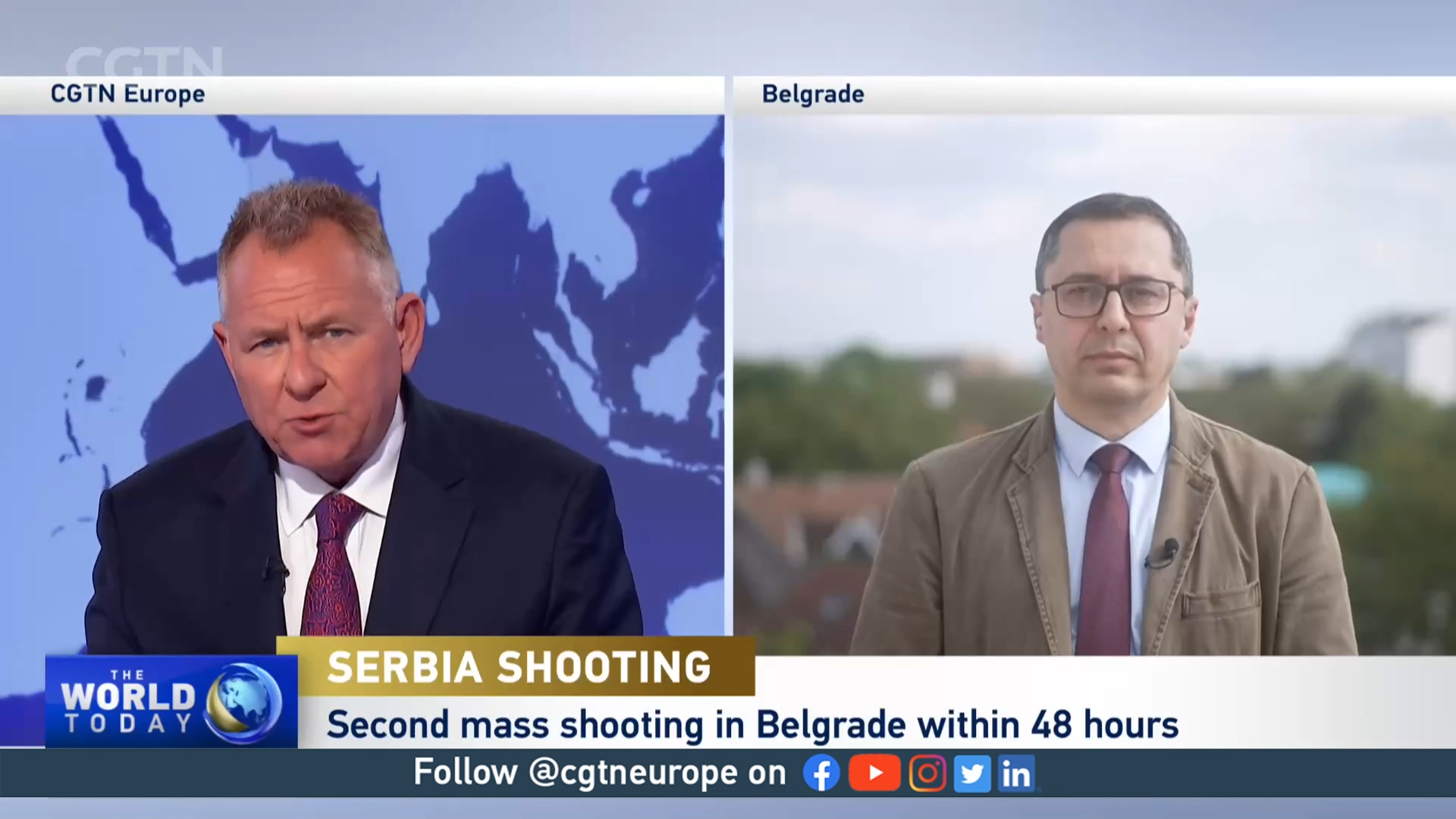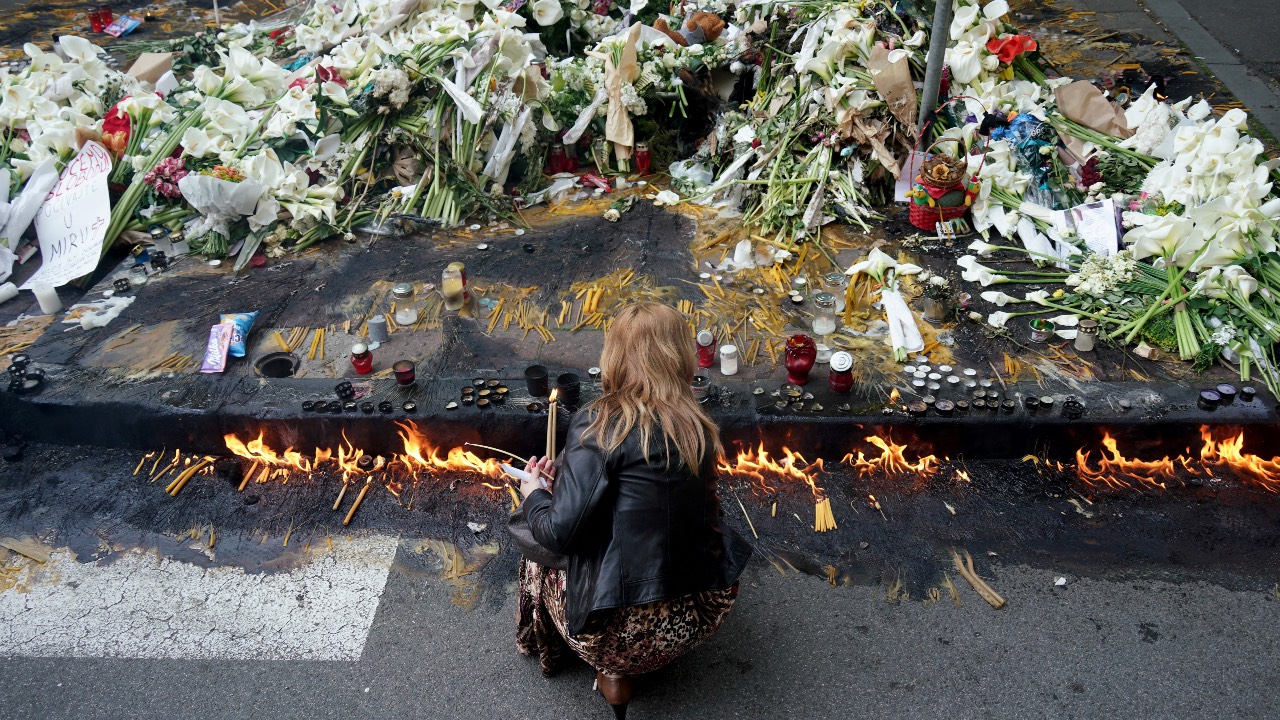01:42

In just 48 hours, two horrific crimes happened in Serbia, a country where mass killings are extremely rare and school shootings are unheard of.
Firstly, on the morning of May 3, nine people were killed in a bloody rampage at the prestigious Vladislav Ribnikar elementary school in Belgrade; a 13-year-old pupil gave himself up to the police.
Later that evening and the following morning, eight people were killed in and around the town of Mladenovac, some 50 kilometers south of Belgrade; a 21-year-old man was arrested.
In both cases, the perpetrators used firearms to commit these heinous crimes.
READ MORE
Schoolboy who killed nine people 'planned attack carefully'
Clamor and clang: How pot-banging became a global protest symbol
Ding Liren makes chess history as China's first male world champion
Police said the 13-year-old boy used two pistols he had stolen from his father. They were legally owned weapons that the father said were properly stored, as per Serbia's gun law requirements.
The attacker first killed a private security guard who was at the entrance of the school, and went on to kill seven girls and one boy, all aged 12 to 14, and wounding another six people, including a history teacher. He eventually went to the school's yard, called the police and calmly surrendered to them.
The suspect has been taken to a psychiatric institution for an evaluation and his father arrested.
A second deadly spree
The second mass killing was committed after an altercation in a school yard, according to state broadcaster RTS, which said the attacker returned with a handgun and an assault rifle – illegal in Serbia – before opening fire and shooting at people from a moving car. The victims were aged between 14 and 21.
Authorities said the suspect also fired at people in two other nearby villages before fleeing. Police found him eventually hiding in his grandfather's house, where they also discovered hand grenades, an automatic rifle and ammunition. The suspect's uncle and grandfather were also arrested.

A woman lights candles outside the school where eight students and a security guard were killed. /Oliver Bunic/AFP
A woman lights candles outside the school where eight students and a security guard were killed. /Oliver Bunic/AFP
In response to the shooting incidents, Serbian President Aleksandar Vucic was quick to address the nation. He shared the details of both events and announced a plan to tackle similar incidents should they happen in the future.
Some of the measures include hiring an additional 1,200 police officers to be permanently stationed in every school in Serbia, increasing the prison terms for breaking the gun laws, and most importantly, "disarming Serbia."
Vucic said that Serbian citizens legally own around 400,000 handguns and that the government's goal is to reduce that number to between 30,000 and 40,000.
However, some local experts say the problem is way deeper than just gun ownership, which is seen as a traditional value in Serbia. They point at the Serbian media, and even at some politicians, who they hold responsible for introducing violence as an acceptable form of behavior in society.
They insist that removing the legal guns will not change anything as those who are determined to commit crimes would find them on the black market. They are of the view that the country needs deep societal changes.
Subscribe to Storyboard: A weekly newsletter bringing you the best of CGTN every Friday